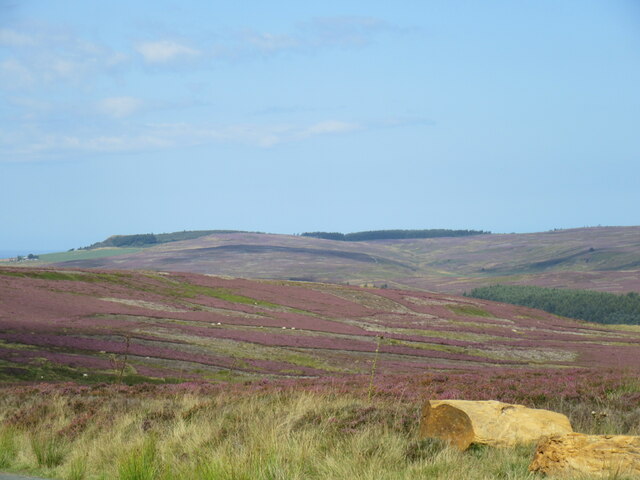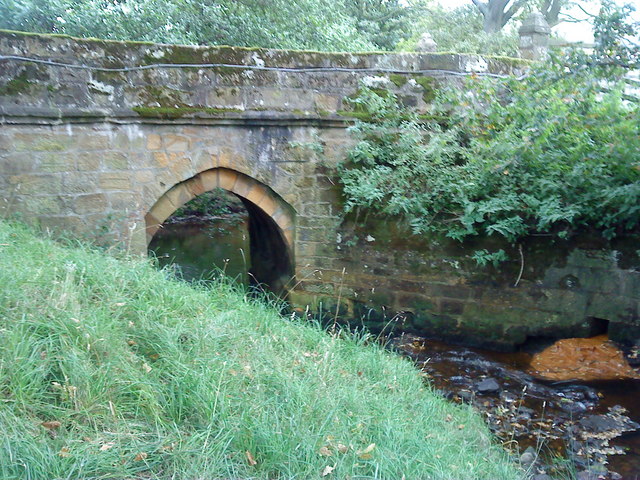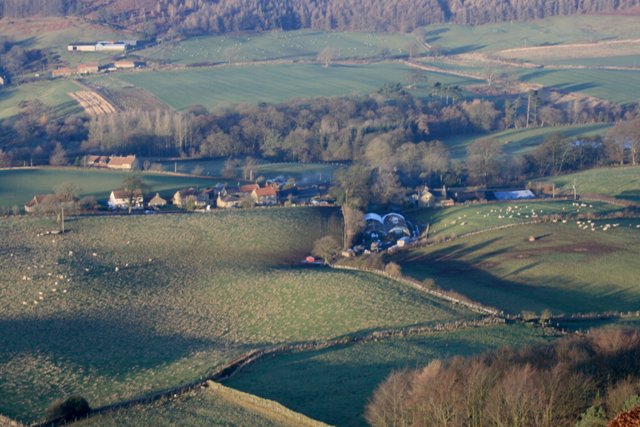Baysdale Wood
Wood, Forest in Yorkshire Hambleton
England
Baysdale Wood

Baysdale Wood is a picturesque woodland located in the Yorkshire Moors, in the northern part of England. Covering an area of approximately 1,000 acres, it is a popular destination for nature enthusiasts and hikers seeking tranquility and natural beauty. The wood is situated near the village of Baysdale, surrounded by rolling hills and offering stunning views of the surrounding landscape.
This ancient woodland is primarily made up of native tree species, such as oak, beech, birch, and rowan. The dense canopy provides a cool and shaded environment, perfect for a leisurely stroll on a hot summer's day. The forest floor is covered in a rich carpet of mosses, ferns, and wildflowers, adding to the enchanting atmosphere.
Baysdale Wood is also home to a diverse range of wildlife. Birdwatchers can spot various species, including woodpeckers, owls, and finches, while lucky visitors might catch a glimpse of roe deer or red squirrels among the trees. The wood is a designated Site of Special Scientific Interest (SSSI), reflecting its importance for conservation and biodiversity.
The wood is crisscrossed with a network of well-maintained footpaths, allowing visitors to explore its beauty at their leisure. There are also several picnic areas and benches scattered throughout the wood, providing perfect spots to relax and enjoy a packed lunch.
Overall, Baysdale Wood offers a tranquil and immersive experience in the heart of Yorkshire's natural beauty, attracting nature enthusiasts and those seeking solace in the outdoors.
If you have any feedback on the listing, please let us know in the comments section below.
Baysdale Wood Images
Images are sourced within 2km of 54.457579/-1.0415917 or Grid Reference NZ6207. Thanks to Geograph Open Source API. All images are credited.

Baysdale Wood is located at Grid Ref: NZ6207 (Lat: 54.457579, Lng: -1.0415917)
Division: North Riding
Administrative County: North Yorkshire
District: Hambleton
Police Authority: North Yorkshire
What 3 Words
///enormous.desktop.unlimited. Near Ingleby Greenhow, North Yorkshire
Nearby Locations
Related Wikis
Basedale Priory
Basedale Priory or Baysdale Priory was a priory in North Yorkshire, England located 8 miles (13 km) East from the parish church of Stokesley. It was a...
Warren Moor Mine
The Warren Moor Mine, was a short-lived mining concern south of Kildale, North Yorkshire, England. Activity at the site was limited to drift mining, and...
Kildale
Kildale is a village and civil parish in Hambleton district of North Yorkshire, England. It lies approximately 3 miles (4.8 km) south-east from Great Ayton...
Kildale railway station
Kildale is a railway station on the Esk Valley Line, which runs between Middlesbrough and Whitby via Nunthorpe. The station, situated 12 miles 65 chains...
Battersby
Battersby is a hamlet in North Yorkshire, England. It lies on the edge of the North York Moors National Park and within the historic boundaries of the...
Battersby railway station
Battersby is a railway station on the Esk Valley Line, which runs between Middlesbrough and Whitby via Nunthorpe. The station, situated 11 miles 4 chains...
Ingleby Greenhow
Ingleby Greenhow is a village and civil parish in the Hambleton district of North Yorkshire, England. It is on the border of the North York Moors and 3...
Easby Moor
Easby Moor is a hill located in the civil parish of Little Ayton in the North York Moors national park within the Cleveland Hills, North Yorkshire, England...
Nearby Amenities
Located within 500m of 54.457579,-1.0415917Have you been to Baysdale Wood?
Leave your review of Baysdale Wood below (or comments, questions and feedback).























